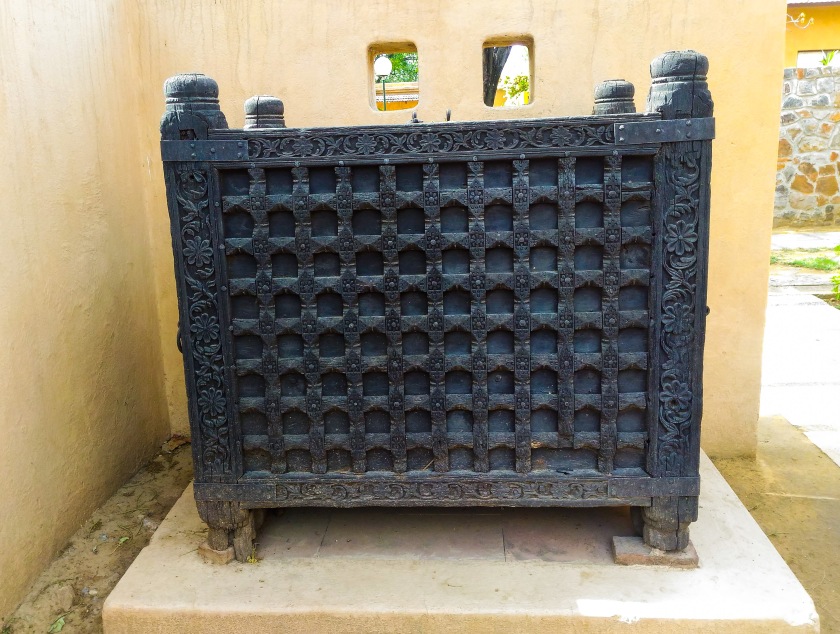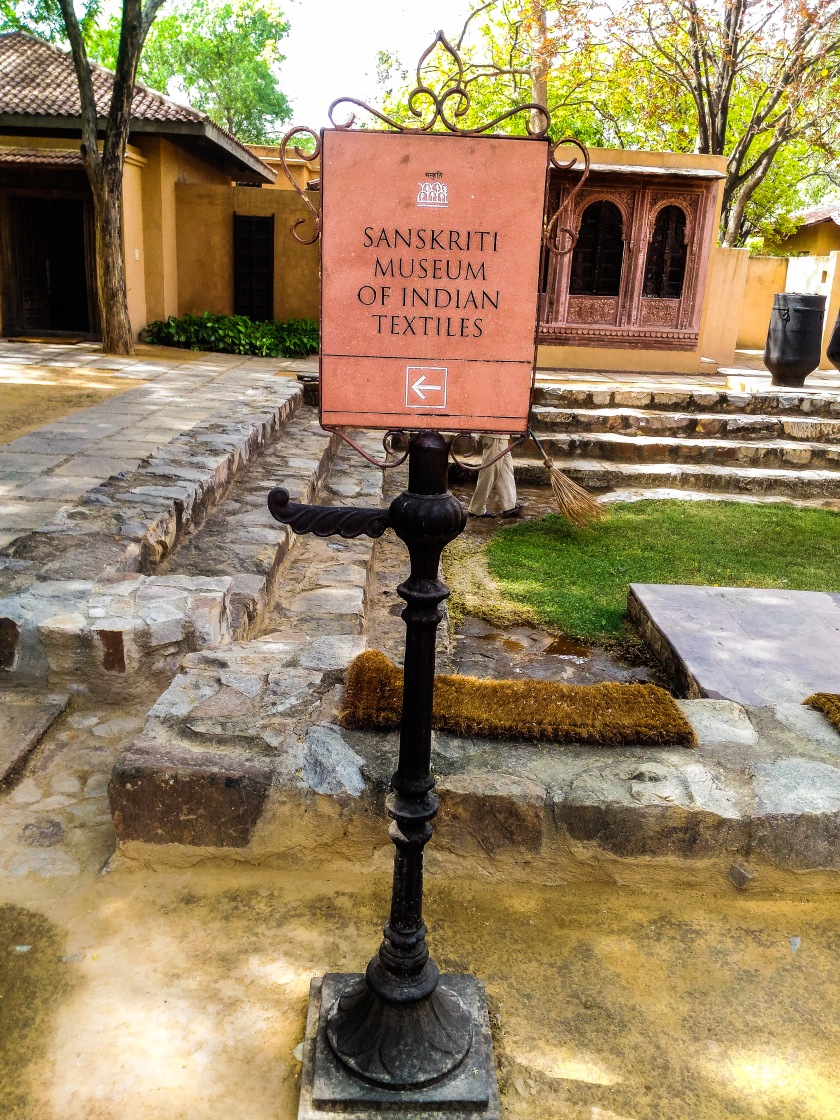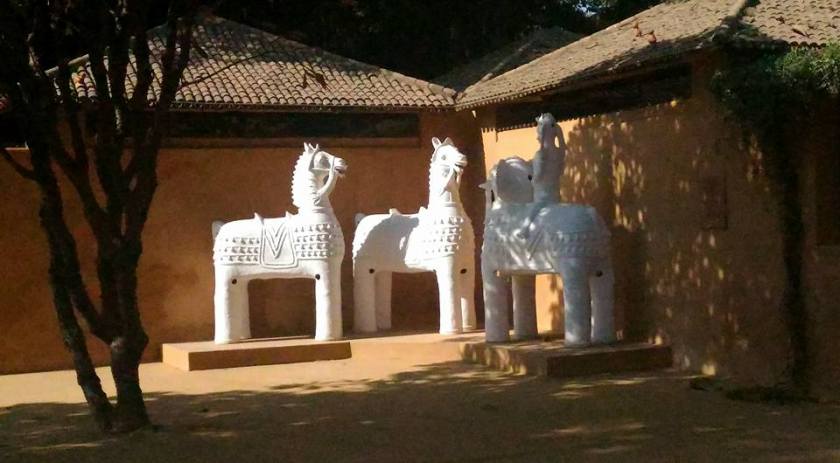Growing up in a family where visiting a museum was akin to visiting a religious shrine, it was but natural that when I shifted to Delhi, the first places on my to-visit list were the museums here. The national capital offers many museums, the most well known of which is the National Museum, a great favourite place of mine, as it allows photography with no holds barred. Besides this great storehouse of ancient and medieval relics, there is the National Rail Museum that holds old trains, the National Gallery of Modern Art, and the National Museum of Natural history, which unfortunately is now burnt to cinders taking away with it some of the priceless stuffed animals that were on display there. Then there is the Nehru Memorial Museum, the National Philatelic Museum, the Indian Air Force Museum, the Sulabh International Museum of Toilets, Museums at the Red fort and Salimgarh (rarely visited by people) and many more. Among these, quietly tucked away on the Gurgaon-Mehrauli Road (known as the MG Road) is the Anandagram, which houses the Sanskriti Kendra.
Founded by Mr. O. P. Jain in 1990 under the umbrella of Sanskriti Foundation, the museum complex is spread over a large campus with pretty buildings and lovely lawns. The Sanskriti Kendra rarely sees many footfalls, except perhaps on weekends, exhibitions, or during workshops. Yet it houses three well stocked museums: the Museum of Everyday Art, Museum of Indian Terracotta, and the Museum of Textiles that integrate the modern with the traditional, by preserving and displaying our indigenous culture, art, workmanship, different cultural practices, and their functionalities in our daily lives. Unfortunately photography isn’t allowed inside the two museums (a rule that I heartily deplore). There are many old and modern artefacts placed artfully across the campus, and one can easily spend a pleasurable afternoon strolling across the extensive lawns and brightly coloured buildings. Along with the museums, the campus also houses a library, an Amphitheatre, art galleries and studios which run in-house art programs teaching folk art forms to both kids and adults alike.
The gaily coloured buildings of the Sanskriti Museum. It reminds me of Tagore’s Santiniketan which has similar rustic buildings giving a feel of space and freedom.

A modern sculpture of the head of Buddha placed in the lawns

A beautiful old dresser
\
A lovely Jharokha with vertical lattice screen panels in red sandstone and old wooden windows

Old elephant head pieces in wood used as the base for a wooden pillar that in turn supports a large modern birdhouse

Large birdhouse with a peacock as the wind vane

An old wooden piece (probably a part of some larger furniture)

A rather looking happy looking crocodile ready to enter the water

Warli art on the houses inside the campus

Another old wooden artefact on display

The Museum of Indian Textiles
It has 6 galleries. The first one has samples of indigo, madder, cotton and silk, the four basic ingredients of Indian textiles. Indigo and madder are considered among the world’s oldest dyes with a history going back to the time of Indus valley civilisation. The display cards also talk of folklores associated with textiles like silk. Legends say that silk was discovered by accident in China when a cocoon fell into the tea cup of a Chinese empress and the strands separated in the warm water of the tea, leading to the discovery of silk threads. The Chinese fiercely guarded the secret of the making of silk threads and thus reigned supreme in the silk trade for a long time, until the secret was revealed to some non-Chinese traders, some say by a Chinese princess. The other galleries in this museum contain beautiful 18th– 19th c. CE pigmented textiles, phulkari embroidery, kantha work, and kashmiri stitches on pashmina wool. Here the museum gives a very interesting anecdote on pashmina wool. The word pashmina is derived from the Persian pashm (meaning wool). This superior quality wool wasn’t produced in Kashmir, and was actually taken from the Ladakhi goat known as capra hircus langier. All of Ladakh’s wool production was monopolised by Kashmir hence the pashmina was taken to be of kashmiri origin. Besides these, there are some beautiful 18th and 19th c. Jain tapestries in both silk and cotton from Jain temples made mostly by nuns. The Gujarat and Rajasthan chain stitch and bandhej collections are beautiful, followed by interesting ikats from Andhra Pradesh, Odisha and Gujarat. The last gallery holds brocades from Benaras, South India, and Gujarat, along with baluchari and jamdani from Bengal. It is indeed a textile lover’s paradise, and strolling through the galleries one wonders at the uniqueness of Indian textiles that are each a labour of love.
An ornate brass panel on the lintel, intricate woodwork on the pillars and a wrought iron bracket decorate the entrance to the Museum of Textiles
The Museum of Everyday Art
It houses interesting items from daily use like nutcrackers, shrines, spoons, cups, plates, knives, etc, and all of these items that are for basic functional use, have been turned into works of art by the hands of different craftsmen.

The entrance to the Museum of Everyday Art that houses old utensils, old musical instruments and various other items used in daily lives

An old wooden bracket placed tastefully at the entrance of the Museum of Everyday Art
The Museum of Indian Terracotta
It displays almost 1,500 artefacts from various tribal communities of India, in its open gallery

Terracotta horses from various regions in the country
Address : Sanskriti Kendra, Anandagram, Mehrauli-Gurgaon Road, Delhi
The nearest metro station is Arjan Garh on the Yellow line
Time to Visit : 10 AM to 5 PM on all days except Mondays and Public Holidays.
Author – Monidipa Bose
She can be contacted at monidipadey@rocketmail.com or at Moni Gatha








